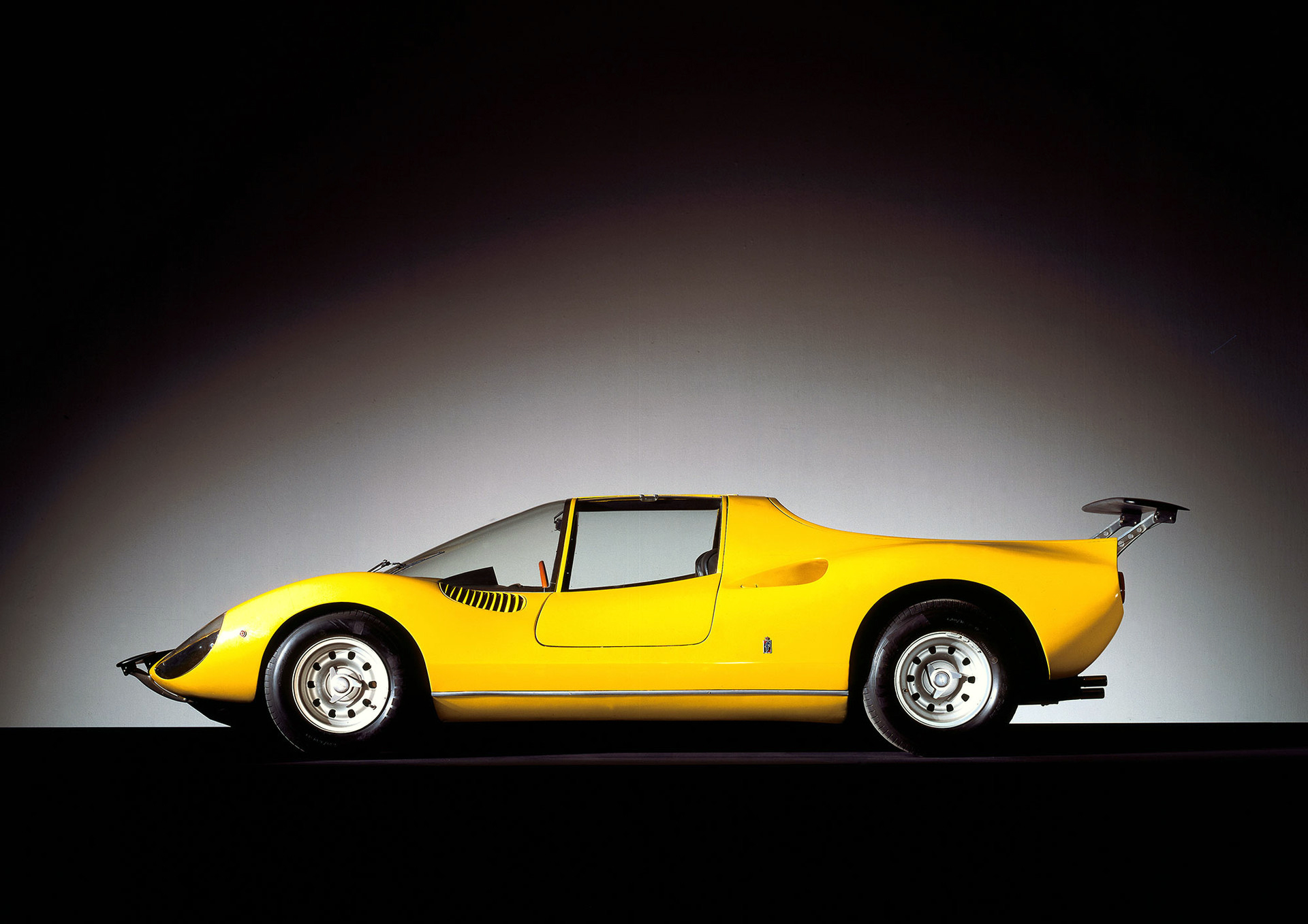Photo credit: Pininfarina, Ferrari, Wheelsage
The 65° V6 engine, put to Enzo by his prematurely deceased son Dino, has been successfully used both in races by sports and single-seater cars, and on the road with the Dino 206 and 246 models. After the race victories of the 206 SP in 1965 and 206 S in 1966, Pininfarina created a fully running prototype that used the same mechanics. The absolutely original car designed by Paolo Martin under the watchful eye of Sergio Pininfarina, brought typically race-oriented elements to road cars such as the front and rear wings.

Presented at the Frankfurt Motor Show in 1967, the car was an instant sensation and Ferrari received a number of requests to purchase it, but the car wasn’t developed because the project between Ferrari and Fiat was to make the Dino a road model with sporty characteristics, but never extreme. Over time, two cars with Fiat badges were created, the spider designed by Pininfarina and the coupe by Bertone, along with the Ferrari versions carrying the model numbers 206 and 246.

The Dino 206 Berlinetta Competizione Prototipo was built in a moment of intense creativity at Maranello, with the sublime interpretation of sports car prototypes such as the famous 330 P3. Pininfarina’s research also focused on weight savings, quantified at about 50 kilograms. Clearly, if they had put it into production, a model as sophisticated and attractive as this would have been a threat to the entire commercial strategy of the cars wearing the Dino badge, and this meant that a sure star of the firmament of sports cars was nipped in the bud.

Today, the car is in the hands of an American collector, James Glickenhaus, now busy brining his own team to the 24 Hours of Le Mans in the hypercar class, and therefore a direct competitor of future Ferraris destined for the famous French race.



